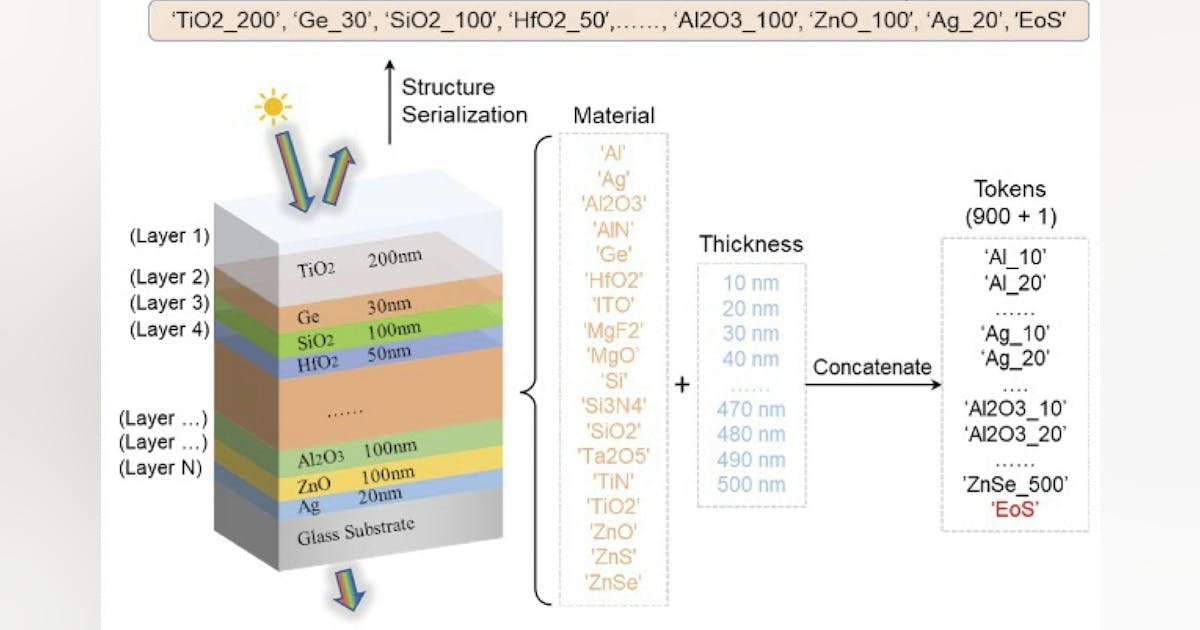Researchers have developed a new artificial intelligence algorithm called OptoGPT, inspired by the technology behind popular AI tools like OpenAI’s ChatGPT. This innovative system is designed for inverse design in optics, allowing it to determine the material structure needed to achieve specific optical properties. Developed by researchers at the University of Michigan, OptoGPT can design optical multilayer film structures, which are stacks of thin layers of different materials. These structures are crucial for optimizing light absorption in applications like solar cells and telescopes, and could also improve extreme ultraviolet light technology used in semiconductor manufacturing.
Professor L. Jay Guo, a key developer of OptoGPT, explains that the system, similar in architecture to ChatGPT, uses a powerful transformer model decoder. It processes material thickness as “words” and their optical properties as inputs, identifying correlations to predict the necessary structure. This enables OptoGPT to rapidly design multilayer films tailored to desired optical characteristics.
OptoGPT is trained on a vast dataset of multilayer structures and their optical spectra. It can quickly generate various structural designs from a single optical target, completing each design almost instantaneously in about a second. The algorithm can also incorporate specific constraints and is highly flexible.
Currently, OptoGPT is designed for one-dimensional photonic structures, but the research team is working to expand its capabilities to two and three-dimensional structures, such as metasurfaces and periodic patterns. Another goal is to make OptoGPT user-friendly and accessible to individuals without specialized optics training, similar to the ease of use of ChatGPT. Researchers believe OptoGPT will empower a wider range of scientists and engineers to design advanced optical components efficiently and conveniently, broadening the applications of optics technologies across various fields.

Leave a Reply